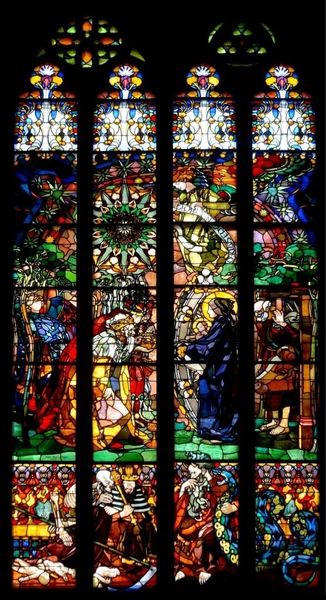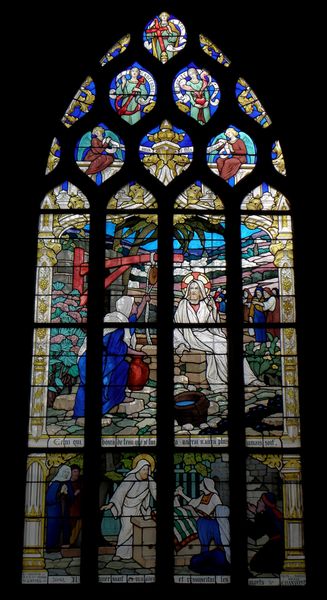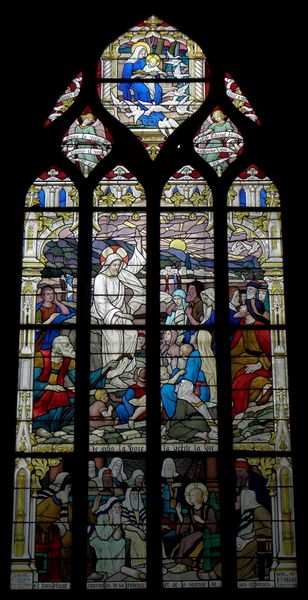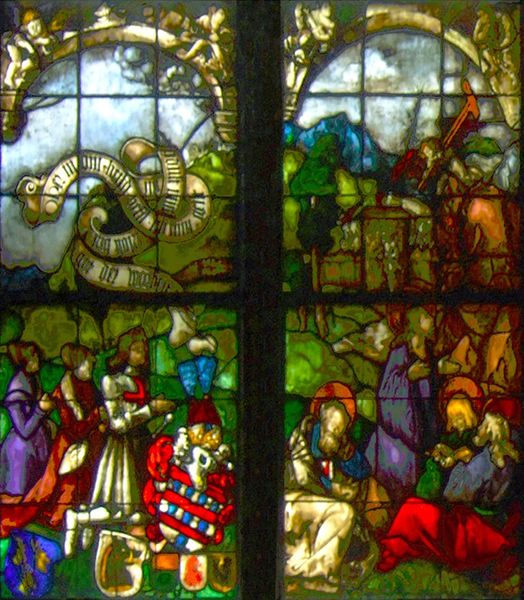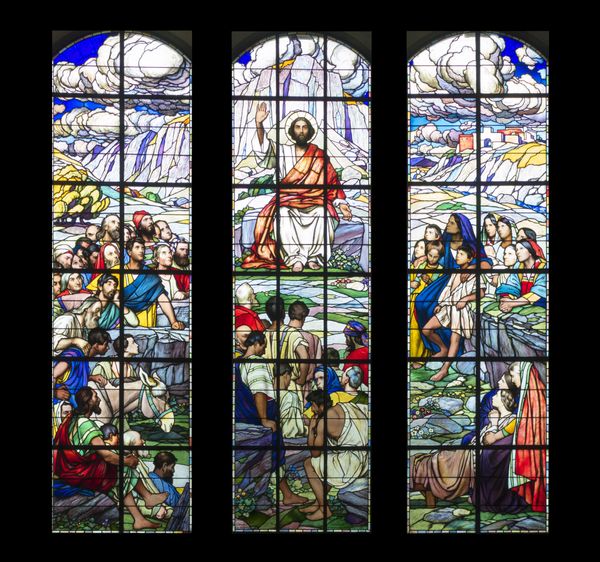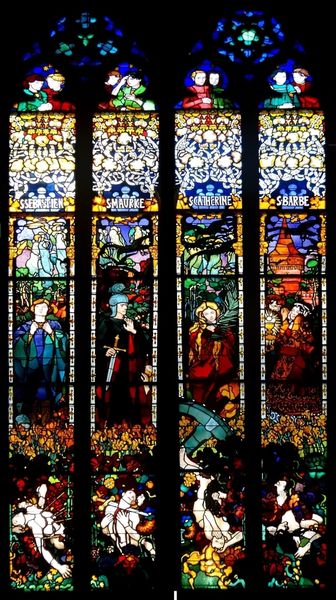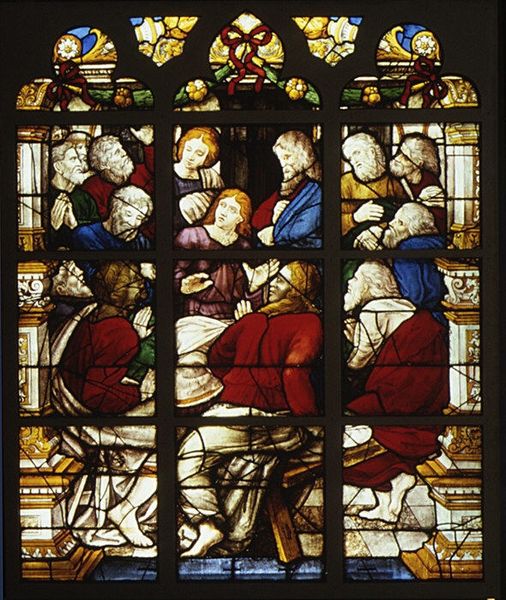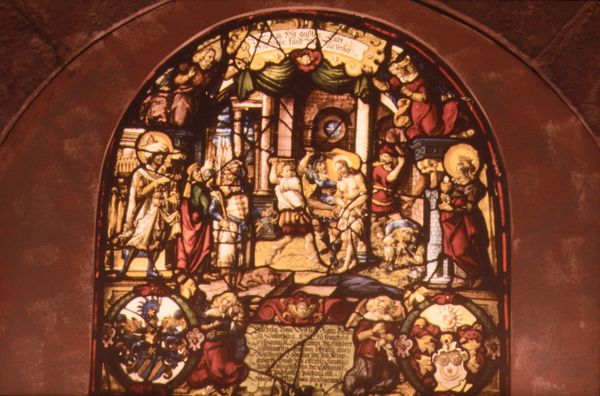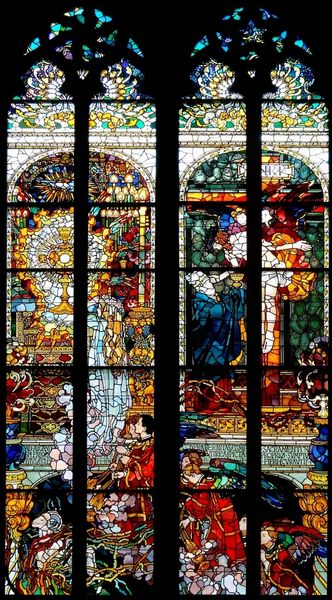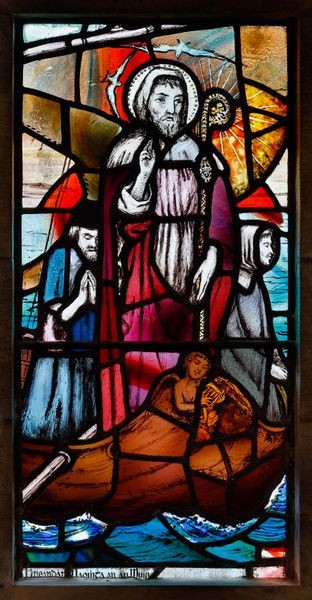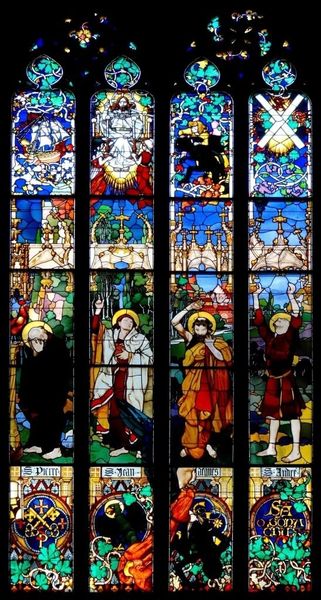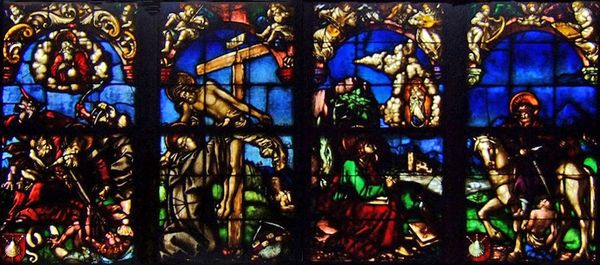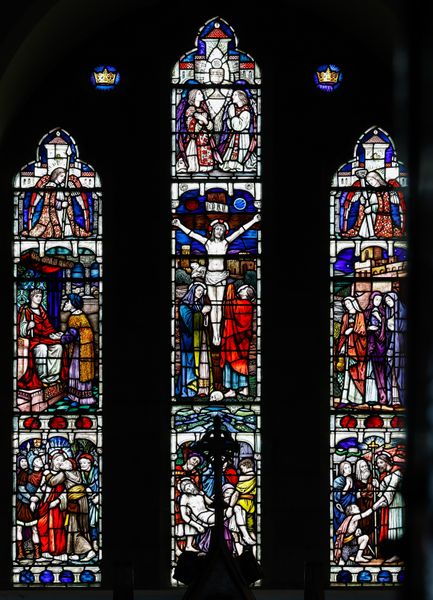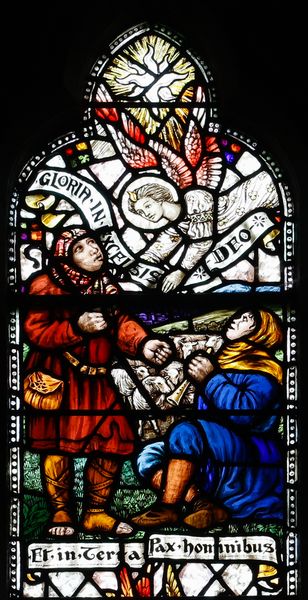
Copyright: Public domain
Curator: What a wonderfully intricate scene. This stained glass window, crafted by Edward Burne-Jones in 1882, depicts David’s Charge to Solomon. The vibrant colors immediately catch the eye, don’t you think? Editor: Absolutely. The reds are incredibly intense. It almost feels theatrical, with these figures posed as if on a grand stage. I’m struck by the contrast between the earthly realm, teeming with activity below, and the celestial figures looking on above. It begs the question, what kind of audience was intended for such an image? Curator: It’s important to consider Burne-Jones’s deep engagement with medieval art and craftsmanship. Look at the careful layering of the glass, the way the light must have streamed through it creating such rich hues, a technical accomplishment requiring skilled hands and detailed knowledge. These workers played an integral role, don't you think? Editor: Definitely. This window clearly serves a didactic purpose within its historical context, presumably as part of a larger architectural whole. It transmits a very specific moral and political message—the continuity of divinely ordained rule from David to Solomon, echoing perhaps Victorian conceptions of power and authority. We might also want to question if a commoner could even grasp these references at the time. Curator: Indeed, we see Burne-Jones engaging with biblical narratives and using them as allegories for his time, a common practice then. I am intrigued by the specific pigments used, some derived from rare minerals. Consider also how these choices affected not just the visual spectacle, but also the cost of the commission and by consequence its social relevance. Editor: Right. Thinking about that commission—how was the selection process managed, and what did this imagery mean to the patrons who funded the project? Stained glass windows of this magnitude had immense civic meaning and shaped the ways communities viewed leadership and piety. The materiality serves a higher end. Curator: I’d add that the window becomes something akin to scripture itself. Consider all these hands touching and crafting each pane to carry all of the moral weight and the symbolic weight. Fascinating to realize such a connection to the past as we grapple to bring beauty and art to our era through new technology. Editor: I agree. Analyzing Burne-Jones through his context provides such rich understandings, not just about him as a Victorian artist, but also his world, with so much societal connection visible through it, even to modern-day observers. Curator: The intricate glasswork certainly elevates the artistic storytelling, providing layers for thought on production and meaning for this significant historical narrative. Editor: It seems Burne-Jones gave us more than simply pretty colors; he gifted us a story worth discussing even centuries later.
Comments
No comments
Be the first to comment and join the conversation on the ultimate creative platform.
